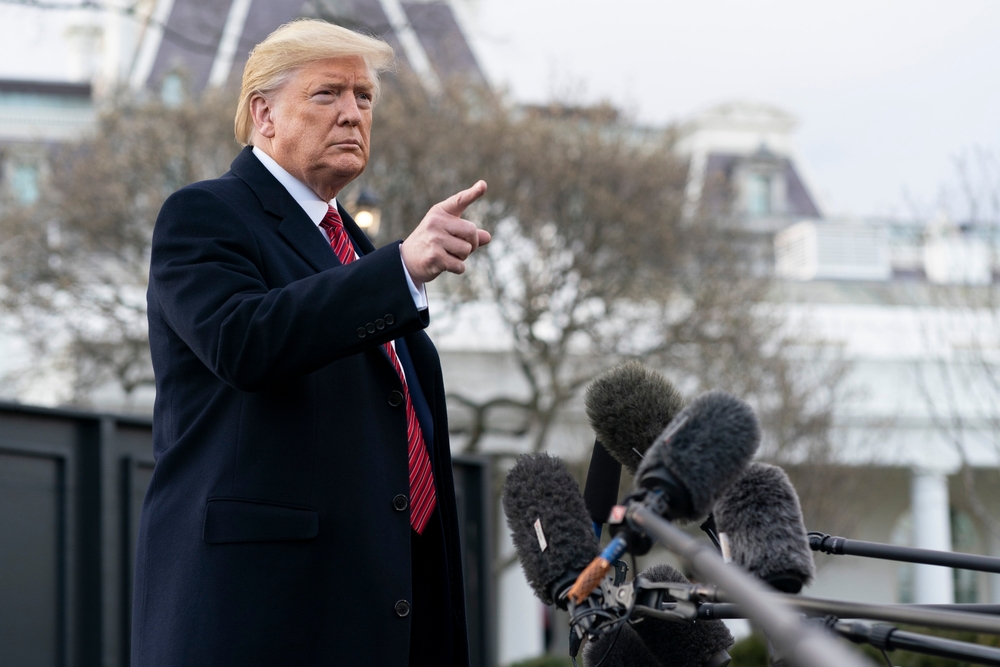The Federal Purge: Trump’s Shutdown Unleashes a Political Bloodbath in Washington
America’s Workforce Is Being Dismantled From Within
A silent war is unfolding in Washington.
As the federal government shutdown drags into its third week, more than 750,000 federal employees remain furloughed while hundreds of thousands more are working without pay. But this time, something far more deliberate is happening — a calculated dismantling of the U.S. civil service.
Behind the scenes, Trump administration officials have begun executing what insiders are calling a “bureaucratic bloodletting” — a combination of mass retirements, forced layoffs, and attrition programs that could permanently shrink the federal workforce by nearly half a million jobs before 2026.
“We’re being used as political pawns,” said Priscilla Novak, a furloughed government researcher. “This is the third shutdown of my career — but the first time it feels like they actually want us gone.”
A Shutdown or a Purge?
At least 4,600 layoff notices have already gone out across major agencies — including Treasury, Health and Human Services, Education, and Homeland Security — as part of a sweeping Reduction in Force (RIF) initiative led by Russell Vought, Director of the Office of Management and Budget (OMB) and a chief architect of Project 2025.
Officially, it’s about “efficiency.” Unofficially, agency memos show departments were told to target programs “not consistent with presidential priorities.”
“What I’m hearing is a lot of anxiety, confusion, and chaos,” said Brent Barron, a Department of Labor official and union representative. “People don’t even know whether they’re furloughed or fired. It’s chaos by design.”
‘More RIFs Are Coming’: Inside the White House’s Plan
Vought confirmed the layoffs in a blunt post on X: “The RIFs have begun.”
The White House later told reporters this was “just the beginning.”
Court filings show Treasury will lose about 1,446 employees, HHS up to 1,200, and even critical divisions like Homeland Security’s Cybersecurity and Infrastructure Security Agency will face cuts.
Union leaders have filed lawsuits calling the move “illegal and vindictive.” But OMB officials see the shutdown as “a once-in-a-generation opportunity to realign government” — a phrase that mirrors the Project 2025 doctrine calling for the “deconstruction of the administrative state.”
The Hidden War for America’s Bureaucracy
Political scientists say what’s happening is not just a fiscal fight — it’s an ideological struggle over control of the federal machine.
Donald Trump allies have long viewed career bureaucrats as the “deep state.” Now, through layoffs and shutdown pressure, they’re replacing expertise with loyalty.
“This is a hostile takeover of the bureaucracy,” said a senior policy analyst at a Washington think tank, speaking anonymously. “The goal isn’t efficiency — it’s obedience.”
Data from the Partnership for Public Service shows retirements have surged 41% year-on-year, with another 200,000 federal workers expected to leave before 2026. The result is a drain of institutional knowledge that may take decades to rebuild.
Lives on Hold: ‘I Don’t Know If I Still Have a Job’
Across the country, the human toll is devastating.
At the CDC, EPA, TSA, and National Park Service, workers describe the shutdown as psychological warfare.
“Not knowing if I’ll ever get paid again is exhausting,” said Peter Farruggia, a furloughed CDC employee. “You check your email every morning to see if you’ve been fired. That’s our reality.”
“It feels like there’s a train getting closer every day,” added Cameron Cochems, a TSA officer in Idaho. “Once that paycheck stops, it gets so loud you can’t even focus on your job.”
Families are draining savings, skipping medical care, and turning to community food drives. Some workers are quietly applying for jobs in the private sector, fearing this shutdown won’t end — or that their jobs won’t exist when it does.
Back Pay in Jeopardy: Trump Defies Federal Law
Under the Government Employee Fair Treatment Act of 2019, furloughed workers must receive retroactive back pay once the government reopens.
But Trump, speaking in the Oval Office last week, cast doubt on that guarantee.
“There are some people that don’t deserve to be taken care of,” he said, referring to federal employees — a comment that sent tremors through agencies already on edge.
Labor leaders say refusing to honor back pay would be unlawful, but enforcement depends on the very system now being gutted.
“This administration is playing games with people’s livelihoods,” said Greg Regan, president of the AFL-CIO Transportation Trades Department. “The only victims here are American families.”
The Economic Fallout: How Much Can America Lose?
Each week the shutdown drags on, the U.S. economy loses between $6 and $8 billion, according to bipartisan budget analysts.
Contractors are idle, mortgage approvals are frozen, and tourism-dependent regions are bleeding revenue as national parks close. Analysts at the Brookings Institution warn that extended shutdowns “erode public trust and weaken government capacity long after they end.”
The airline, agriculture, and small business sectors are already reporting secondary effects — from grounded FAA inspectors to delayed SBA loan approvals — feeding fears of a broader confidence collapse.
‘A Loyalty Test for the Republic’
With lawsuits mounting and union protests spreading, the federal crisis now looks less like fiscal gridlock and more like a test of democratic endurance.
“Even worse than morale is the future implication for how our government runs,” said Novak. “We need a strong civil service that isn’t politically motivated. Furloughed workers just want to work — but it feels like the rules have changed.”
Scholars warn that dismantling career civil service protections could permanently tilt power toward partisan administrations. “Govern by fear, fire by design,” one former federal HR executive told reporters. “That’s the new normal.”
What Comes Next
A federal judge has ordered the Office of Management and Budget to disclose all planned layoffs and agency impacts, but full transparency remains elusive.
Even if the shutdown ends, the damage may already be irreversible. Institutional memory has been shredded. Morale is at a generational low. And for the first time, federal employees are asking whether public service itself is now a political risk.
“This isn’t just a shutdown,” said one union leader. “It’s the deliberate unmaking of the government from the inside out.”














